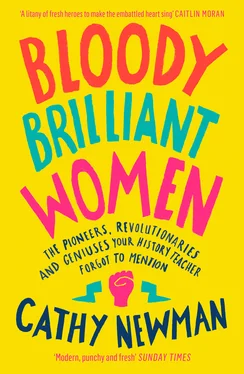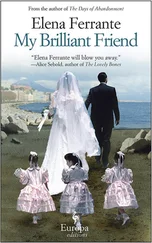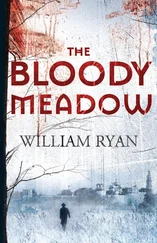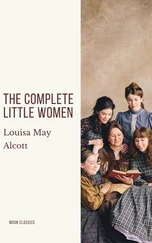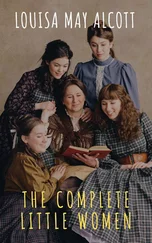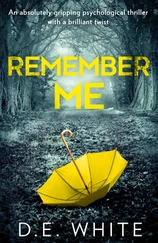Sexually liberated women were rather more sympathetically drawn in the popular novels of the day. One of the most widely read was Anna Lombard (1901) by ‘Victoria Cross’ – a nom de plume used by Annie Sophie Cory, the Indian-born daughter of a British army colonel.
It was the Fifty Shades of Grey of its day, selling an estimated six million copies, running through more than thirty editions and remaining in print until 1930, after which it mysteriously vanished from the nation’s book shops and shelves. On publication it was denounced by critics as ‘disgusting’ ( Athenaeum ) and ‘thoroughly impure’ ( Academy ) because its eponymous New Woman heroine, while engaged to be married to an assistant commissioner in the Indian Civil Service called Gerald Ethridge, sleeps with and then marries her servant Gaida.
Gerald finds himself in a quandary. Should he abandon Anna or persist with the engagement in the hope that she will come to her senses and overcome the physical obsession for which, Gerald concedes with extraordinary post-feminist empathy, she is ‘no more to be held responsible than she would have been for any physical malady’?
Adultery, interracial sex, infanticide … Cory took every Victorian taboo she could think of and moulded a bestselling novel out of them, complete with prose which cleverly (or not so cleverly, depending on your viewpoint) displaces onto the natural world the sex it would have been illegal for her to describe: ‘The purple sky above was throbbing, beating, palpitating … What a night for the registration or the consummation of vows!’73
Just as intriguing was Cory’s switching of gender roles – so that it is Anna who is the sexual adventurer and Gerald who nurtures and abstains. One contemporary reviewer who appreciated this was the journalist W. T. Stead, friend of Annie Besant, who wrote: ‘Never before in English fiction can I remember so clearly cut a representation of an embodiment in a woman of what, alas!, is common enough in a man.’74
The cultural reign of the New Woman was long – from the early 1890s to 1911, though establishment newspapers tired of her early: ‘Shall we never have done with the New Woman?’ asked The Times , reviewing Ella Hepworth Dixon’s only novel The Story of a Modern Woman in 1894. No one embodied her freewheeling sexual confidence like Amber Reeves – Maud Pember Reeves’ daughter and the model for Ann Veronica Stanley in H. G. Wells’ 1909 novel Ann Veronica – ‘a girl of brilliant and precocious promise … [with] a sharp, bright, Levantine face under a shock of very fine abundant black hair, a slender nimble body very much alive, and a quick greedy mind’.75 Educated at Newnham College, Cambridge, where she helped to found the Cambridge Fabian Society, Reeves read Moral Sciences and gained a double first in 1908.
Her affair with Wells was one of the great scandals of the day. When it was discovered, Wells was ostracised by many friends and obliged to resign from the Savile Club. But even though the relationship produced a child – a marriage of convenience to a lawyer called Rivers Blanco White followed hastily – there was never any suggestion that she was a victim. On the contrary, in the reckless, emancipated spirit of Anna Lombard, she had wanted sex with Wells as much as he had wanted it with her.
-------------------------------------
On 22 January 1901, Victoria died at the age of eighty-one. She had ruled over a fifth of the land area of the world, a population of four hundred million people. But imperial confidence was starting to crumble. The empire was expensive to maintain and, besides, other countries were catching up with Britain’s technological invention, expansionist ambition and naval power.
As we saw earlier, Victoria had railed against the ‘mad wicked folly’ of women’s rights. The next twenty years would show her to have been on the wrong side of history. But many women, particularly aristocratic ones, agreed with her. In 1889 a petition in the Nineteenth Century magazine signed by over a hundred mostly upper-class women rejected calls for equality because of ‘disabilities of sex’ (menstruation) and ‘strong formations of custom and habit resting ultimately on physical difference, against which it is useless to contend’.76
Funnily enough, the first woman to vote did so accidentally. Lily Maxwell owned a crockery shop in Manchester and so met the property qualification that would have allowed her to vote had she been a man. Her name had been added to the electoral register in error. Encouraged by Lydia Becker, she voted in a by-election in 1867 (for her local Liberal MP, Jacob Bright), although her vote was subsequently declared illegal. ‘We are told that Mrs Lily Maxwell is an intelligent person of respectable appearance,’ the feminist Englishwoman’s Review reassured its readers. ‘It is sometimes said that women, especially those of the working class, have no political opinion at all, and would not care to vote. Yet this woman, who by chance was furnished with a vote, professed strong political opinions, and was delighted to have a chance of expressing them.’77
From the 1860s onwards there was constant fracturing and realignment of pro-suffrage groups; constant disputes over tactics and even goals. In 1897 another Women’s Suffrage Bill passed its second reading with a seventy-one-vote majority, only to collapse when the government refused to allocate further time to it. Some saw this as evidence of progress, others as the exact opposite.
The most obvious split was between the ‘suffragists’ – whose most famous figurehead was Millicent Garrett Fawcett – and the ‘suffragettes’ – led by the Pankhursts. The suffragists, represented by the National Union of Women’s Suffrage Societies (NUWSS), were committed to winning the vote by constitutional, non-violent means. Suffragettes, on the other hand, felt a defiant, militant path was the only appropriate one. They rallied to a different banner – that of the Women’s Social and Political Union (WSPU), formed by Emmeline Pankhurst.
The Pankhursts occupy a curious place in our culture. They’re synonymous with the fight for suffrage to the point where most people aren’t aware that anyone else was involved. Like Florence Nightingale and the Brontës, they are better known as a heritage brand than as actual people. Remarkable though their idealism and crusading zeal undoubtedly was, Emmeline Pankhurst and her daughters could be, in their biographer Martin Pugh’s words, ‘ruthless, high-handed and self-righteous’; characters who on close inspection ‘come as a shock’.
The Pankhursts’ fame has overshadowed the contribution of Millicent Garrett Fawcett, who, in a quieter way, played a more effective role in acquiring the vote for women. She also found time to co-found Newnham College, Cambridge and, in 1901, travel to South Africa to investigate conditions in the concentration camps the British had set up there after the Boer War.
Pankhurst mania has also obscured fascinating figures like Sophia Duleep Singh, daughter of the last Maharaja of the Sikh Empire, Maharaja Duleep Singh. (He married a chambermaid, Ada Wetherill, after Sophia’s mother died of typhoid, caught from ten-year-old Sophia who miraculously recovered.) Sophia was another of Queen Victoria’s goddaughters, but turned against the Empire after visiting India in 1907. Once back in England, she campaigned for both the Women’s Social and Political Union and Dora Montefiore’s Women’s Tax Resistance League (WTRL) – motto, ‘No vote, no tax’. And despite her aristocratic credentials she was happy to stand on street corners selling The Suffragette newspaper.
So how did the Pankhursts come to own the suffrage story? The answer lies, rather prosaically, in the political scene of the 1880s and 1890s.
Читать дальше
